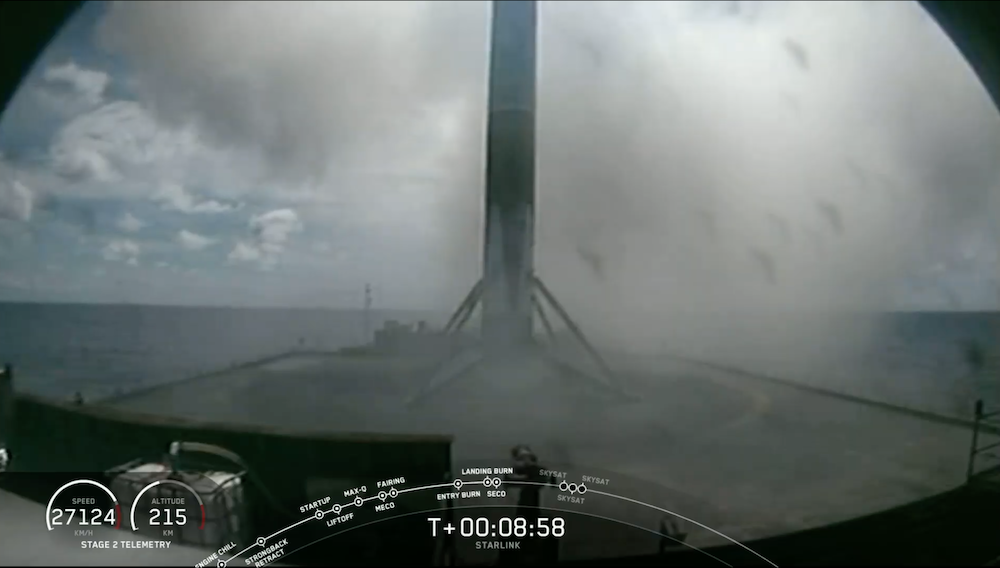WASHINGTON — SpaceX successfully launched a Falcon 9 rocket Aug. 18 on a mission that reused the same first-stage booster for a sixth time, setting a record for Falcon 9 booster reuse.
The Falcon 9 lifted off at 10:31 a.m. Eastern from Cape Canaveral Air Force Station in Florida, carrying 58 small broadband satellites for SpaceX’s Starlink constellation, and three SkySat optical imaging satellites for Planet.
Planet’s SkySats separated from the rocket about 13 minutes after liftoff, followed by the Starlink satellites 46 minutes after liftoff. The first-stage booster landed on the drone ship “Of Course I Still Love You,” in the Atlantic Ocean.
The launch marks the first time SpaceX has flown the same first-stage booster six times. The company first used this particular first stage in September 2018 to launch the Telstar-18 Vantage satellite to geostationary transfer orbit. The booster flew again in January 2019, carrying 10 Iridium NEXT communications satellites to low Earth orbit, and later conducted three separate Starlink launches, with the most recent occurring in June 2020.
SpaceX founder Elon Musk has described the current Falcon 9 first-stage booster as capable of at least 10 flights, with refurbishment possibly extending the number of flights to 100. The company builds a new upper stage for each launch.
SpaceX has tested the limits of Falcon 9 reuse through Starlink missions, having launched its own Starlink satellites on the first-ever fourth flight and fifth flight of a rocket booster. The company’s Aug. 18 launch also featured previously flown payload fairing halves that have since been recovered again — one by the boat “Ms. Tree,” and the other via a soft water landing.
SpaceX has now launched 653 Starlink satellites, including two prototypes. It is not clear, however, how many Starlink satellites launched so far will provide service when SpaceX starts offering internet connections late this year.
SpaceX told the U.S. Federal Communications Commission June 23 that nine Starlink satellites had “suffered diminished maneuvering capability at an altitude above injection,” and that another five had already been deorbited “either to test the de-orbit process or because the satellite was not performing optimally.”
Musk also tweeted in April that the company was deorbiting its two TinTin prototype satellites.
SpaceX has submitted paperwork for a constellation of up to 42,000 Starlink satellites, but has described the constellation as “economically viable” at around 1,000 satellites.
While Starlink will need many more satellites before providing service, the launch completed Planet’s constellation of 21 SkySats.
The SkySat satellites provide imagery at 50 centimeter resolution, complementing Planet’s larger fleet of Dove cubesats that provide 3-5 meter resolution imagery.
Mike Safyan, Planet vice president of launch, said SpaceX’s rideshare program was better for Planet than relying on vehicles designed specifically for smallsats.
“[W]e were able to get these satellites launched much faster compared to a dedicated launch,” he wrote in an Aug. 14 blog post.
Planet launched its last six SkySats in groups of three on Falcon 9 launches. Splitting the satellites into two groups helps speed their service start by shortening the time needed for orbital plane shifts with onboard propulsion, “all of which results in Planet’s customers benefiting from these enhanced products much sooner,” Safyan said.
